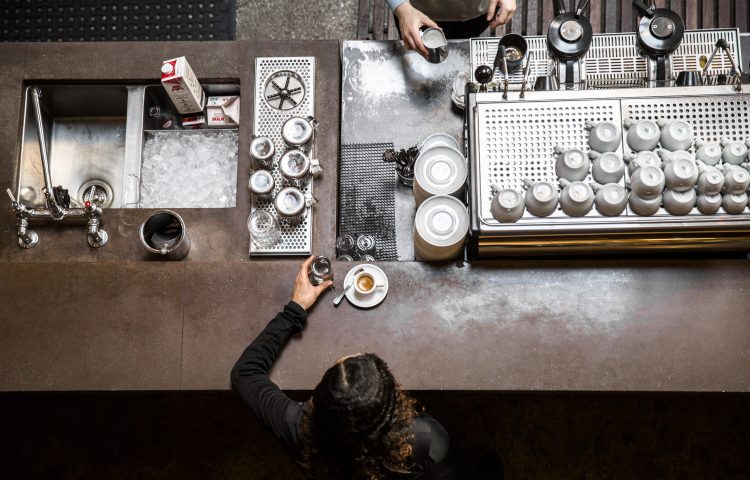We all love our delicious, carefully prepared espresso-based drinks but how can we keep track of all the different variations out there? What’s the difference between a latte, macchiato, cortado, or americano? We’ll discuss the similarities and differences between these popular espresso drinks and teach you how to create your own yummy renditions at home. These drinks are all very similar in their ingredients but can differ greatly depending on the coffee shop or part of the world you’re in. In some cases, one barista’s cappuccino is another’s latte or flat white. Why is it so confusing and why is there no industry standard?
Let’s define espresso, the foundation for all of these espresso drinks, and go into further detail.
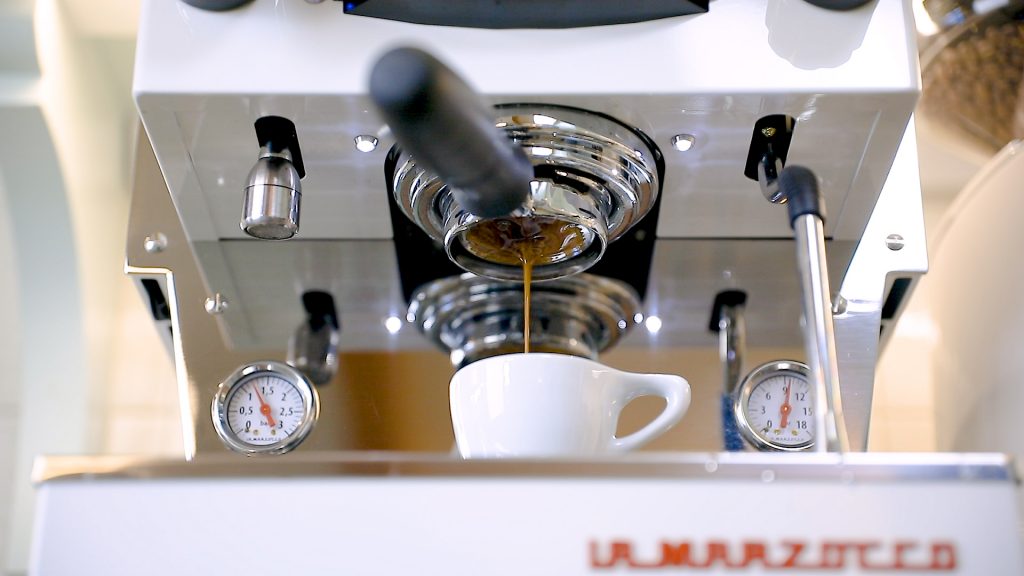
Espresso
is an intensely concentrated way of brewing coffee produced by forcing hot water through very finely ground coffee particles. Brewed coffee is around 98% water and espresso is usually about 90% water. You can use any kind of roasted coffee to make espresso but most roasters will create a blend or utilize a certain roast profile (roasting recipe) that best suits this finicky brewing method. For more info on this topic check out our article on the Impact of roasting on coffee
Our espresso obsessed friends at Clive Coffee tell us:
“Despite the myriad of names, almost every espresso drink involves just two ingredients: espresso and milk. To create a vast and varied café menu, you only alter two things: the amount of milk in the drink and the amount of air in the milk. You may also notice that when it comes to espresso drink taxonomy, many of the definitions and terms overlap. This is mostly due to two things: 1) It’s difficult to make firm boundaries between drinks when they are made of the exact same ingredients. 2) There isn’t a strong standardizing system in place between cafés. Instead, much of the drink terminology is based on the perspective of individual shop owners and baristas. ”
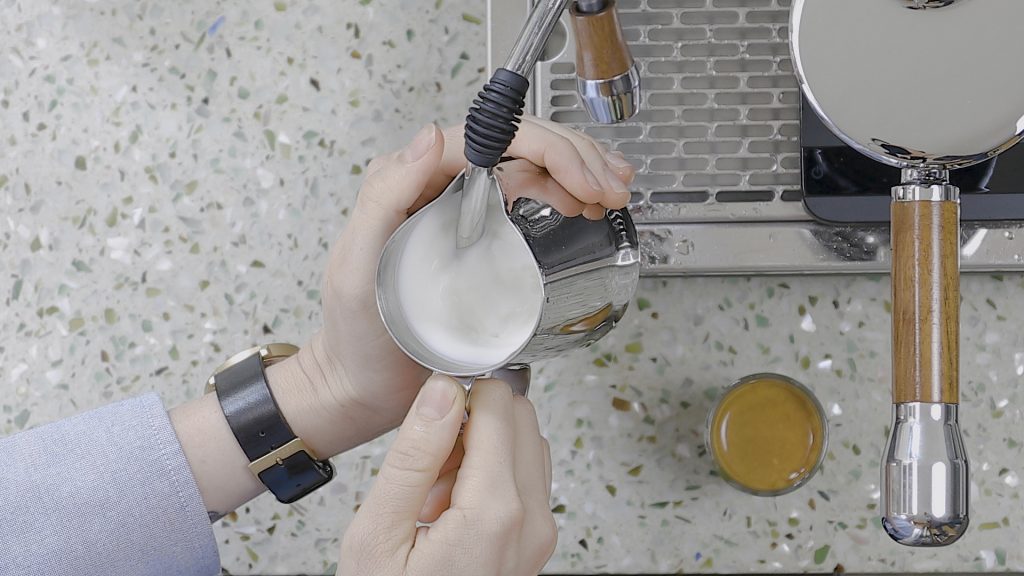
Milk
This brings us to the other component of most espresso drinks which is Milk (or alternative milk if you prefer non-dairy). Again, the amount of milk added to espresso and the amount of air in the milk will help differentiate all of the following drinks. The amount of milk and foam affects the texture and consequently the flavor of each beverage. So there you have it. Your latte, macchiato, cortado, and flat white are all variations and interpretations of the same thing; espresso and milk. Here’s our breakdown of the different espresso drinks and how we like to make them.
Espresso Drinks: Definitions & Recipes
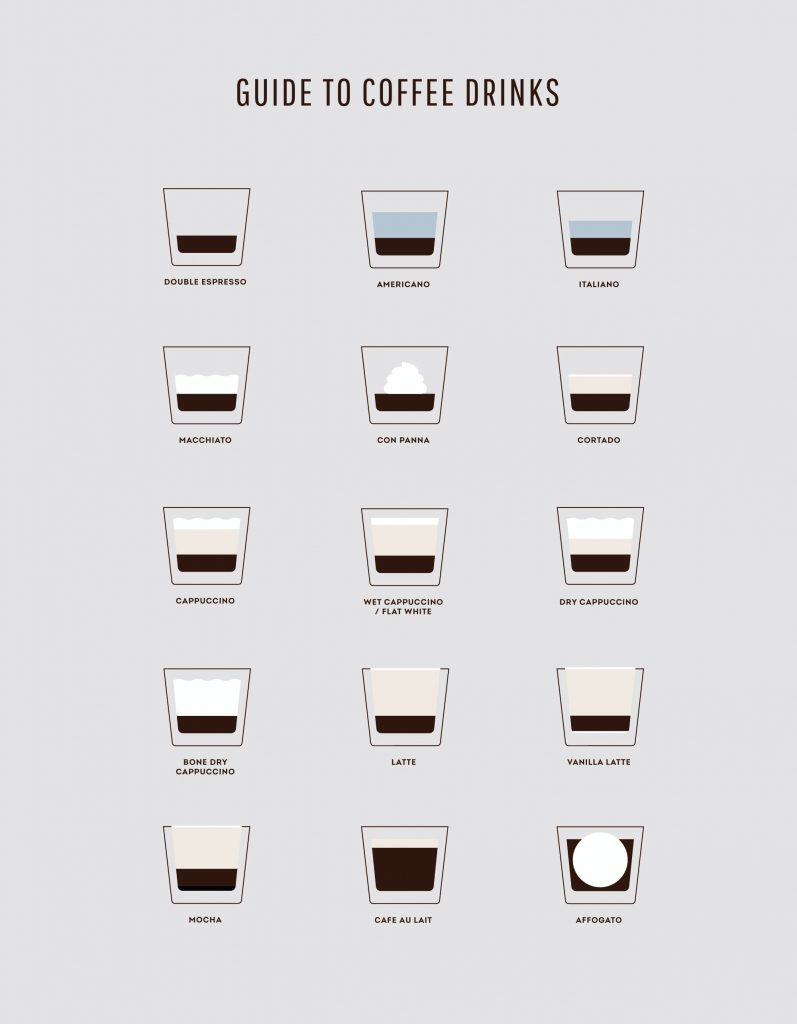
Espresso
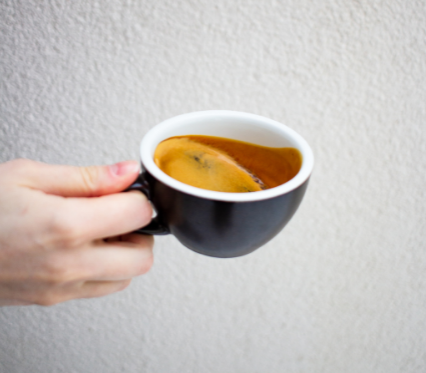
In the United States, we use the term espresso to define “concentrated coffee” made with an espresso coffee machine. It essentially means quick, fast, or “express” in Italian which is why you might hear some mistakenly call it “eXpresso”. Caffè espresso translates to express coffee and is the popular coffee choice for Italians.
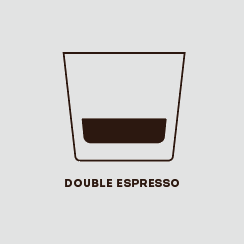
MistoBox espresso recipe for home brewers:
1:2 ratio to begin and adjust to preference. This usually requires between 18-20 grams of very finely ground coffee to yield 30 grams or 1.5 ounces of liquid espresso within roughly 25-30 seconds. We call this a “double shot” of espresso. At one point or another, you may have noticed Doppio written on a café’ menu which is Italian for double. Doppio= double shot of espresso
For a more traditional espresso experience browse our traditional, dark, and roasty espresso offerings
Staff picks | Mela’s Vero Espresso Blend and Parisi’s Roma Espresso Blend
For a more modern, vibrant espresso experience browse our lighter, brighter, and fruitier espresso offerings
Staff Picks | Populace’s Espresso Proper and Tandem’s Time & Temperate Espresso Blend
Americano
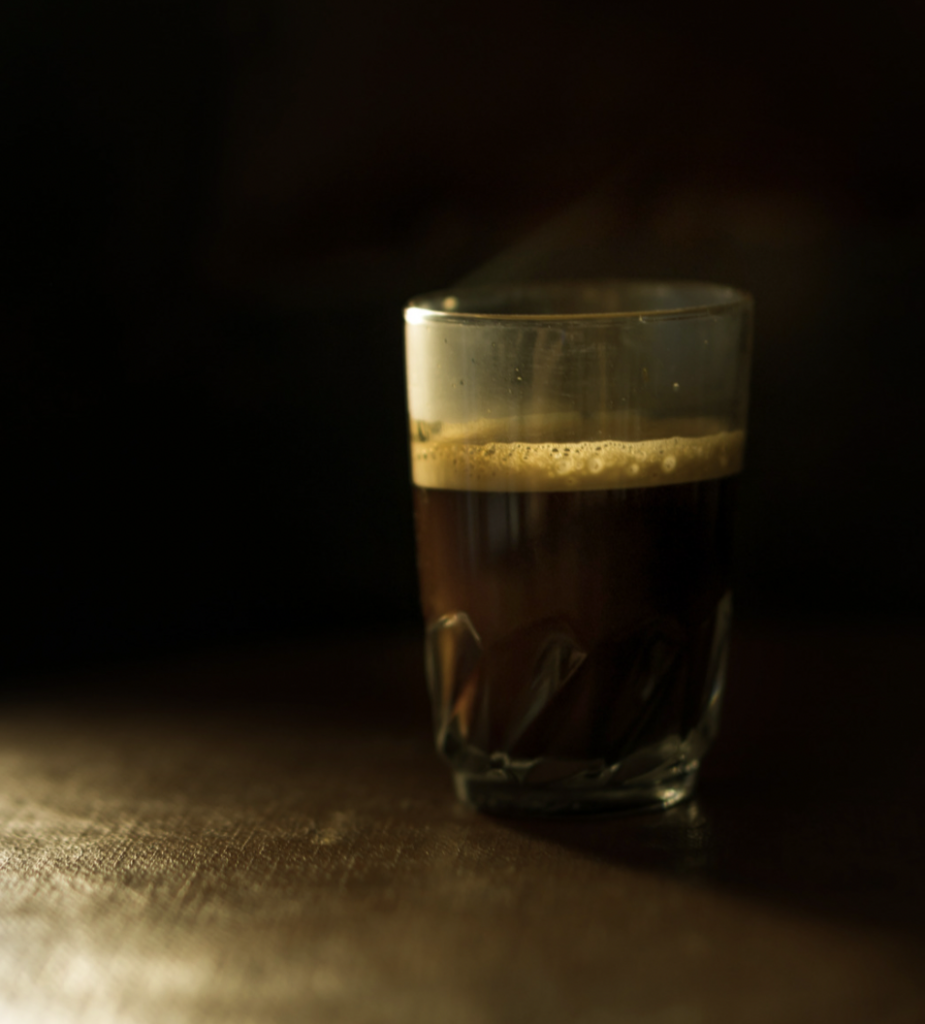
The only “milkless” espresso drink we’ll cover is the Americano. An Americano is an espresso that has different amounts of hot water added to it. Americano=espresso + water. The drink is commonly attributed to American soldiers that would ask for coffee in Italy during World War II. Americans weren’t accustomed to such a small, concentrated form of coffee and would add hot water for the drink to better resemble the brewed coffee they were used to consuming back home.
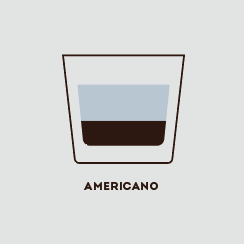
MistoBox Americano recipe:
1:4 Espresso to Water Ratio
Add more or less water for personal preference
Macchiato

The word macchiato means marked. There are two ways a drink can be “marked” and it will usually depend on the café or region you are in. The more traditional way of “marking” is to add a small amount of steamed milk to espresso. Caffè macchiato translates to marked coffee. This small beverage, usually 2-3 ounces total, is a popular choice in Italy. It’s the Italians’ way of adding a little milk to coffee which might cut the bitterness and add a little sweetness to the caffeinated beverage.
Large coffee chains in the U.S. have popularized the macchiato in a much different way. Companies like Starbucks inverted the traditional recipe and meaning with the Latte macchiato, which translates to marked milk. In this drink, you’ll have a large amount of steamed milk and mark it with a tiny bit of espresso. In this case, it’s a very similar drink (or even the same) to the caffè latte.
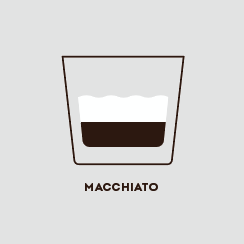
MistoBox Espresso Macchiato Recipe:
1:1 Espresso to Milk Ratio
Staff Picks | Owl’s Howl from Sightglass Coffee and Big Truck Espresso from Olympia Coffee Roasters
Cappuccino

Which version of cappuccino shall we begin with? The cappuccino is typically an espresso-based drink with a bit of milk and a bit of foam. Again, this drink’s definition has evolved over time and will depend on the region you are in. The name, cappuccino, is believed to have originated in Vienna in the 17th century. Capuchin or Kapuzin friars had shaved heads and wore brown-colored robes which resembled this milk-based coffee drink. In the 1930s the drink was “Italianized ” with the help of espresso machines.
“Traditionally, an Italian cappuccino was a 5-6 ounce beverage composed of equal parts espresso, milk and milk foam. When the drink migrated to the United States, American patrons loved it so much they wanted more; café owners were happy to oblige and the cappuccino began to grow larger and milkier. Over time, the drink came to mean a very foamy milk and espresso drink of varying size. Then “third wave” cafés offered a new take on the cappuccino. High-end roasteries and cafés wanted to emulate Italian tradition while providing a modern twist. To do it, they returned to only serving smaller 5-6 ounce cappuccinos. But instead of topping the drink with a few dollops of airy foam, they wanted to serve a milk drink rich with dense, microfoam. While some say this definition is more like a latte or flat white, many say the rich texture and flavor of the milk is far superior to an overly airy “traditional” style cappuccino.”
Clive Coffee
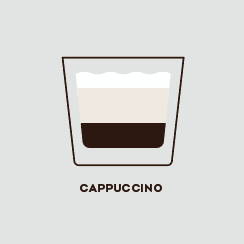
Traditional Cappuccino recipe:
1:1:1 Espresso to Milk to Foam Ratio
Staff Pick | Equator’s Tigerwalk Espresso Blend
Latte
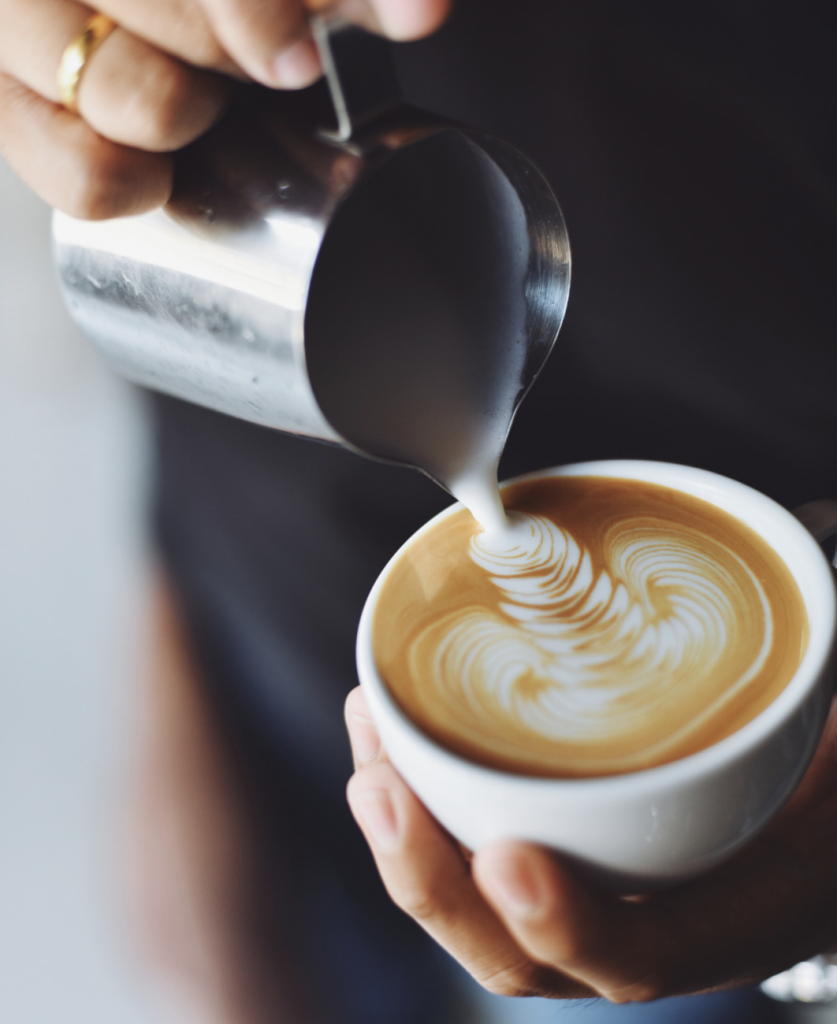
In the United States, a latte is an espresso and steamed milk (sometimes cold milk) drink that varies in size. Order a latte in Italy and you’ll probably get a glass of milk. This is due to the fact that latte means milk in Italian. By ordering a caffe latte, you’ll have a better chance at getting a drink much more similar to the latte you know and love in the U.S. There is usually less foam in a latte than a cappuccino and more milk if you’re at a larger coffee chain.
Learn more about the best practices for milk in coffee on our tasting series.
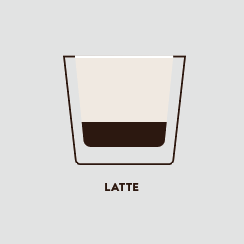
MistoBox 10 Ounce Latte Recipe:
1:4 Espresso to Milk Ratio
To make a larger latte increase the amount of milk to match your desired size and taste.
Staff Pick | Flying Monkey Espresso from PT’s Coffee
Cortado

The cortado is most similar to the macchiato. We’d argue that sometimes these drinks are the same! More often than not, the cortado consists of 1 part espresso and 2 parts steamed milk. While macchiato means marked in Italian, Cortado is “cut” in Spanish. It’s the Spanish equivalent of ordering a coffee that is cut with milk or simply put, coffee with some milk.
Gibraltar
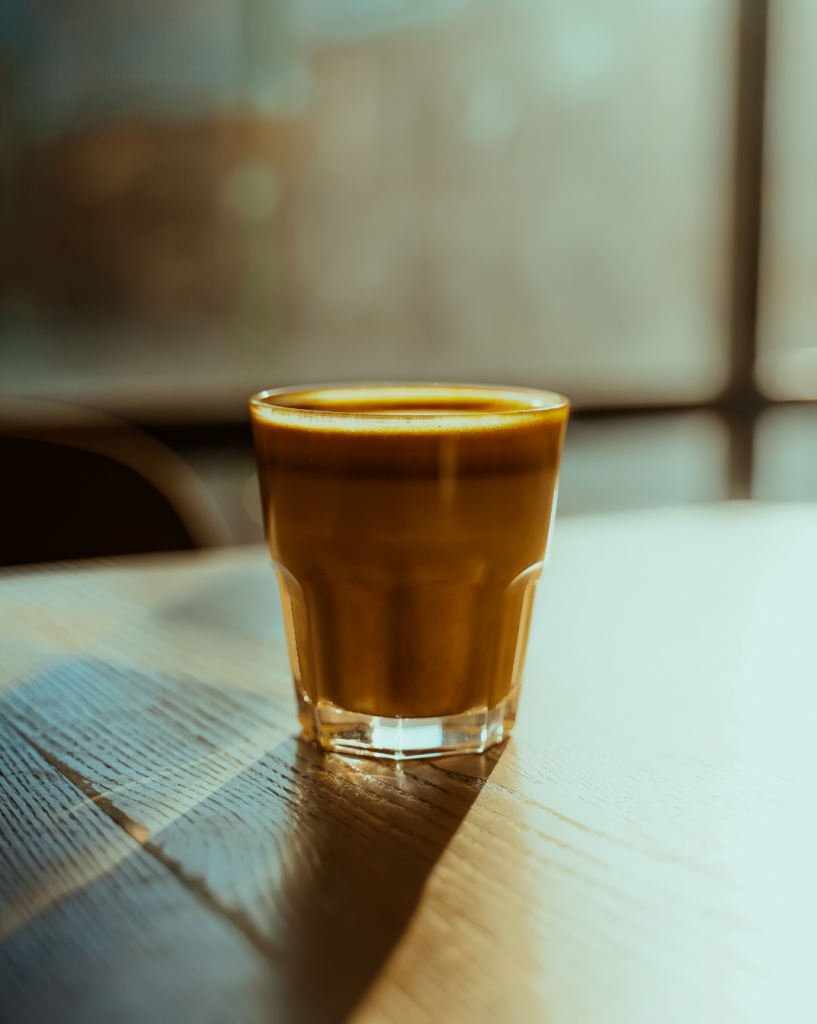
You may have noticed a beverage called the Gibraltar on a few specialty café menus in the U.S. over the years. It’s essentially a cortado served in a Libbey Gibraltar-brand glass.
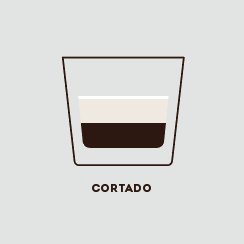
MistoBox Cortado & Gibraltar Recipe:
1:2 Espresso to Milk Ratio
Flat White
A flat white is yet another milk and espresso drink fighting for distinction. It’s most similar to a small caffe latte or modern cortado. The drink evolved in Australia and New Zealand where consumers wanted something similar to their cappuccino but without the massive dollop of foam on top. They asked for it flat, hence the name flat white! More often than not, the flat white is a cappuccino-sized latte, roughly 5-6 ounces with no added foam.
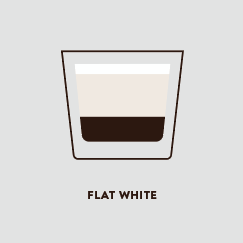
MistoBox Flat White Recipe:
1:3 Espresso to Milk Ratio
Staff Pick | Kaldi’s Cafe Malta Espresso
Conclusion
Understanding what each drink means can help us when placing an order in a café. It’s worth asking a barista how they make their macchiato or cortado to avoid any confusion. Especially if you’re particular about the fine details and unfamiliar with the café you’re visiting. I personally wouldn’t want to end up with a 20-ounce milk drink when I expected an espresso gently marked (or cut) with a hint of milk.
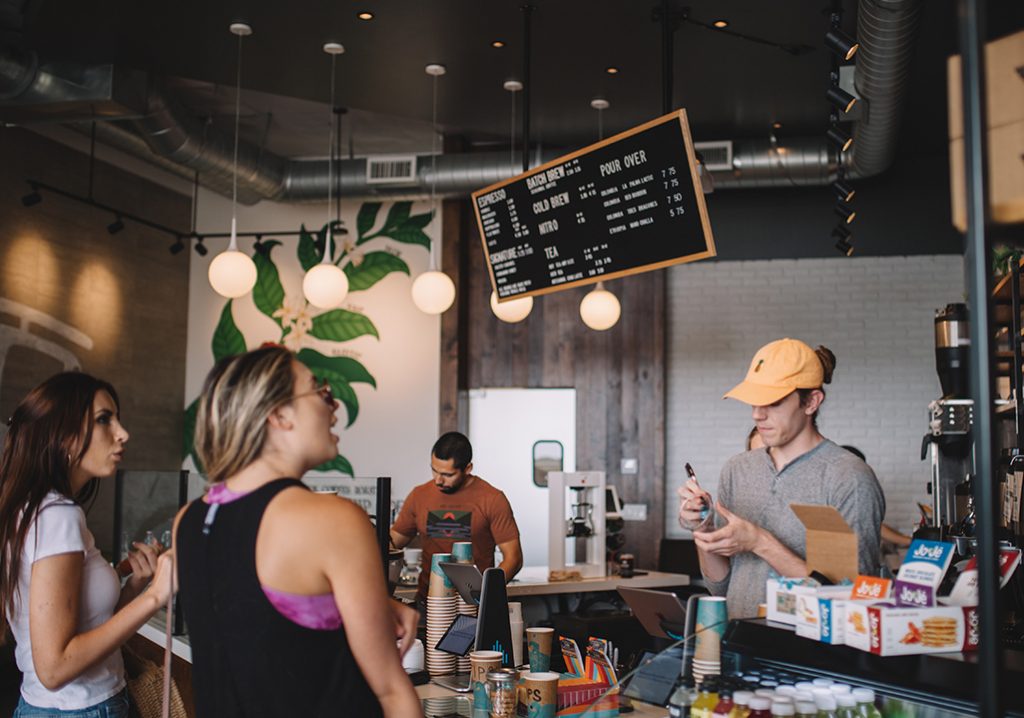
Cheat guide
Caffè espresso | concentrated coffee made with an espresso machine
Doppio | double espresso
Caffè Americano | espresso + hot water
Caffè Latte | espresso + milk
Caffè Macchiato | espresso marked with milk
Caffè Cappuccino | espresso + milk + milk foam
Café Cortado | espresso cut with milk
Gibraltar | cortado served in gibraltar glass
Flat White | espresso + milk
Learn more about espresso, brewing coffee and taste with our Coffee Tasting Series check out our specialty coffee article, guide to coffee cupping, or learning what influences coffee flavors?
Did you know we wrote an ebook? Check out the MistoBox Specialty Coffee Tasting Guide: A How-To Guide to Refine Your Coffee Tasting and Brewing Skills on Amazon.

